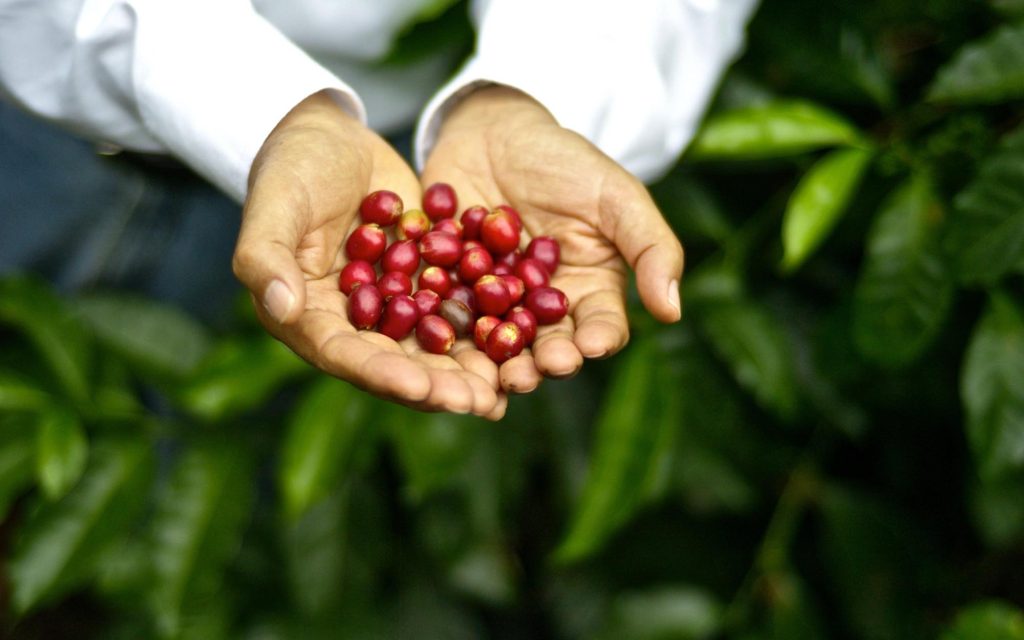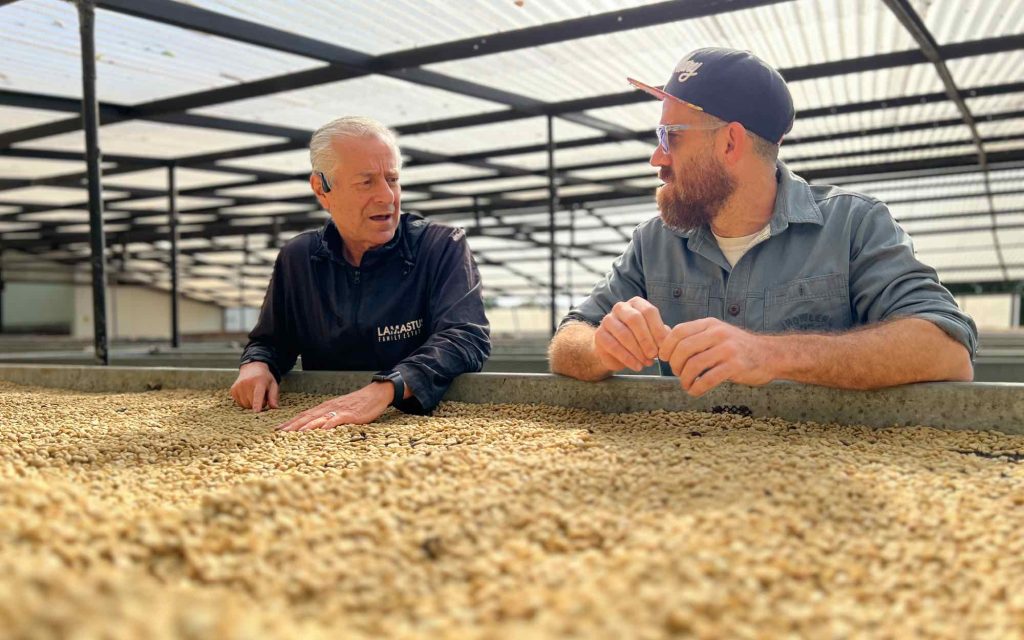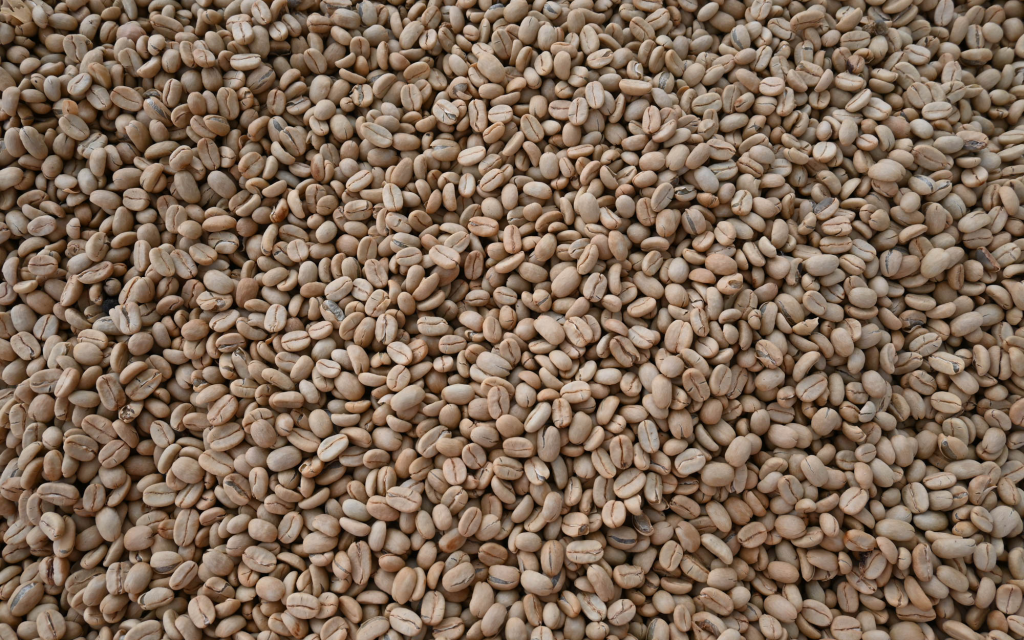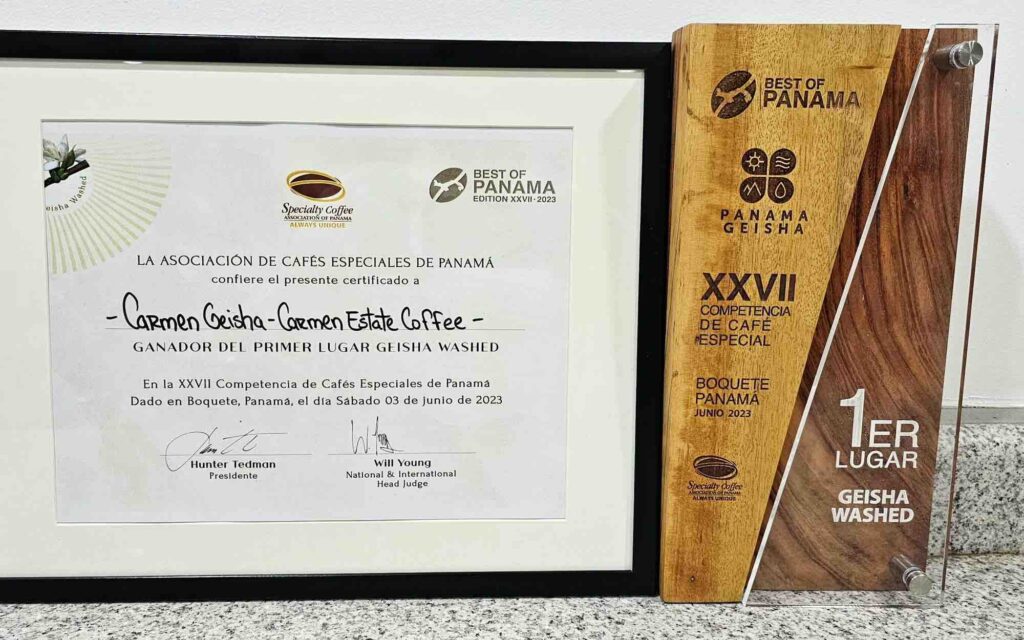Panama, Colombia, Ethiopia: There is no “best” origin for Gesha coffee

For 20 years, Gesha has remained one of the most sought-after varieties in the world. After its meteoric rise to specialty coffee fame in 2004, it has since received record-breaking bids at numerous renowned coffee auctions – especially in Panama.
We often associate Gesha with Panama – and for good reason. It was in this Central American country that producers discovered the variety’s huge potential in terms of quality. Gesha’s origins, however, are in Ethiopia, where it still grows today. Moreover, other countries have also started to produce Gesha – including Colombia and Guatemala.
This raises the question: is there a “best” origin for Gesha? Or is that impossible (or potentially even unfair) to answer?
To find out, I spoke to Adam Overton, general manager at Gesha Village and Ben Rowe, owner of Just Bru Coffee and Harmony Coffee Roasters.
You may also like our article exploring why some roasters are willing to spend more than US $10,000 per kg on Gesha.
Gesha: A history
Like its name, Gesha originates from the Gesha region of Ethiopia. According to the International Trade Centre Coffee Guide, Gesha is an Ethiopian landrace variety. In agricultural terms, this means it developed naturally to a specific local environment over many generations – most likely without any human intervention.
During the 1930s, researchers collected seedlings and seeds from Ethiopia and sent them to Kenya and Tanzania, where the variety was first recorded as “Geisha” – a common variation of its name. In the 1950s, the UN’s Food and Agriculture Organisation (FAO) sent some of the seedlings (named VC496) to the Tropical Agricultural Research and Higher Education Center (CATIE) in Costa Rica.
Subsequently, CATIE supplied VC496 seeds to the Panamanian government, which then distributed them to farms in Boquete. One of the farms was Hacienda La Esmeralda – the same farm that produced the 2004 Best of Panama-winning coffee that first sparked such huge interest in Gesha.
Since then, producers have built on Hacienda La Esmeralda’s initial success, which has fuelled consumer demand for Gesha. In fact, at the 2023 Best of Panama auction, a washed Gesha from Carmen Estate Coffee received 96.5 points and sold for US $10,005/kg (US $4,538.20/lb).
Today, breeders no longer consider Gesha an heirloom crop, but a variety. This means that over the past few decades, humans have intentionally cultivated Gesha to retain and display more of its desired genetic traits – mostly its incredible flavour profile.
What makes Gesha coffee so special?
Gesha often has a tea-like body, as well as complex fruity and floral flavours. As with any coffee, factors like region, climate, terroir, and processing method all affect its final cup profile.
Adam Overton is the general manager at Gesha Village, a farm in West Omo, Ethiopia. He explains why Gesha is so popular.
“Gesha has a very unique and complex cup profile that you can’t duplicate with other varieties,” he says. “Its signature profile is complex, with layered flavours of citrus fruit and florals and a pronounced flavour of jasmine.”
Ben Rowe is the owner of Just Bru Coffee (a premium coffee subscription service) and Harmony Coffee Roasters in York, UK. He believes that given its excellent reputation, his impressions of Gesha are somewhat skewed in relationship to it other varieties. He explains he almost always assumes several things when purchasing Gesha:
It will likely cost significantly more than most other varieties in the same quality range
The Geshas found on many roasters’ offerings are likely to have received at least 88 points on the Specialty Coffee Association 100-point scale
It was probably sourced from a single producer or estate in Central or South America
“The importer incurs a lot of risk when selecting Gesha to put on its offerings,” he adds. “No doubt they have sampled many, many Geshas and have been meticulous when selecting exactly which ones to sell.
“For my entire coffee career, all the Geshas I have ever tried have been ‘the cream of the cream of the cream of the crop’,” Ben continues. “I think this makes it relatively unique among other varieties.”
Why is Panama the most well-known origin for Gesha?
Bigger and bigger auction prices increasingly put Panama under the spotlight as the Gesha origin.
“Panama had a head start in the specialty coffee market and it’s been great to see this unique variety get the recognition it deserves over the years,” Adam explains. “It’s also worth noting that Panama is considered the ‘best’ Gesha origin because there are many innovative farms and producers getting the best out of the variety. They do this by carrying out farming best practices and innovative approaches to processing that bring out unique qualities.
“But for people who want to taste the true origin of Gesha, they should try Ethiopian Geshas,” he adds. “We have our own unique microclimate that brings out its own distinct characteristics.”
Given its association with Panama, many people consider the country to be the “best” origin for Gesha. Ben, however, challenges these claims.
“For me, it’s akin to saying France produces the best wine, Italy makes the best espresso, or Belgium makes the best chocolate,” he tells me. “I think the statement ‘Panama is the best origin for Gesha’ is more in relation to the fame of Panamanian Gesha or a branding strategy from roasters rather than a claim of absolute quality. It’s certainly the most famous origin for Gesha.
“You can likely grow high-quality Gesha in any producing country if you have good weather conditions and you have good access to resources,” he adds. “It may be that Panama’s terroir is naturally better suited to growing Geshas, and that high-quality wet and dry mill facilities make no difference, but with all the exceptional Geshas we’ve seen in the last ten years that have come from other producing countries and farms who have made such investments, I would debate that.”
Where else does the variety grow?
Gesha can technically be grown anywhere along the Bean Belt, but producers will see varying levels of success. This is because there are many factors which affect coffee quality, and Gesha is particularly susceptible to most of them – including terroir.
“Because of the specific conditions needed to grow this variety, it’s difficult to produce the ‘classic’ Gesha profile outside of Panama, Ethiopia, and a few select farms across the world,” Adam explains.
Colombia has become something of a prominent Gesha origin in recent years – which has led many World Barista Championship competitors to highlight its potential on the global stage.
“Gesha can be grown pretty much anywhere that produces coffee,” Ben says. “Malawi, Colombia, Costa Rica, Mexico, Taiwan, Ethiopia, and Indonesia all grow Gesha.
“The variety seems to showcase its terroir extremely well, but the variety also has its own distinct hallmarks,” he adds. “Regardless of where it’s grown, it tends to express a signature combination of floral, citrus, and stonefruit characteristics.”
So what does it take to grow the “best” Gesha?
As with any other variety, factors like elevation, soil quality, microclimate, temperature, and rainfall all play a key role in producing high-quality coffee.
Adam suggests that altitude is one of the most important variables in determining Gesha quality. Ben, meanwhile, argues that access to finances and resources is the probably most crucial step.
Why access to resources & support is key
“If your goal is to produce very high-quality Gesha then you will likely need to have excellent wet mill and dry mill facilities,” he says. “Many producers also experiment with different types of fermentation, even down to selecting particular yeasts to inoculate with.
“Specialist labourers, consultants and highly-trained agronomists aren’t cheap either,” he adds. “You’ll likely need proper irrigation systems, access to water in case of prolonged drought, and an abundance of fertilisers. Producers may even need to forego income the first few years until the plants start to bear fruit, and then may have to take a hit if their crops fail. Very few producers are in that kind of a position.
“That’s not in any way an attempt to discredit farmers producing at the highest level of quality possible,” he continues. “I’m aware of how much hard work and experience is needed, but I’m simply pointing out there’s a reason we don’t see more high-quality Malawian Geshas, and it’s unlikely to just be a direct result of what’s in the soil.”
It’s more than likely that Panama will forever remain the go-to origin for Gesha. The country’s relationship with this exclusive variety is unique, and has cemented its position as a global producer of high-quality Gesha.
There are, however, many other countries which grow Gesha – and some of them are becoming more prominent. But ultimately, without the right level of financial support and access to resources, some producers could struggle to reach the high standards set by Panama’s coffee sector.
Enjoyed this? Then read our article on experimental coffee processing in Panama.
Photo credits: Gesha Village
Perfect Daily Grind
Want to read more articles like this? Sign up for our newsletter!
The post Panama, Colombia, Ethiopia: There is no “best” origin for Gesha coffee appeared first on Perfect Daily Grind.





Responses